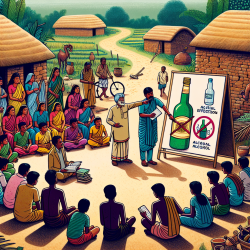Introduction
Spinal Muscular Atrophy (SMA) is a genetic disorder characterized by muscle weakness and atrophy. With recent advancements in treatments, understanding the lived experiences of adolescents and young adults with SMA is crucial for practitioners aiming to provide optimal care. The research article titled “I have SMA, SMA doesn’t have me” offers valuable insights into the challenges and successes faced by this demographic, providing a foundation for improving therapeutic practices.
Key Findings from the Research
The study conducted by Mazzella et al. (2021) highlights several critical areas affecting the quality of life for adolescents and young adults with SMA:
- Challenges: Participants reported difficulties in forming relationships, feelings of isolation, accessibility issues, and dealing with stigma.
- Successes: Despite challenges, many individuals pursued higher education, developed meaningful friendships, and demonstrated resilience.
- Peer Support: A significant 39% of respondents expressed the need for peer support groups to connect and navigate shared challenges.
Implications for Practitioners
Practitioners can enhance their skills and improve outcomes for SMA patients by considering the following strategies:
- Foster Peer Support: Establishing peer support groups can provide emotional and social benefits, helping individuals share experiences and coping strategies.
- Enhance Accessibility: Work with schools and communities to improve accessibility, ensuring that SMA patients can participate fully in educational and social activities.
- Promote Independence: Encourage the use of adaptive technologies and resources that support independence in daily activities.
- Address Mental Health: Incorporate mental health support into therapy plans, recognizing the psychological impact of living with SMA.
Encouraging Further Research
The findings from this study underscore the importance of ongoing research to better understand the needs of adolescents and young adults with SMA. Practitioners are encouraged to engage with this research to inform their practice and advocate for resources that address identified gaps in support.
Conclusion
By integrating the insights from this research into practice, practitioners can play a pivotal role in enhancing the quality of life for adolescents and young adults with SMA. This approach not only addresses immediate challenges but also empowers individuals to lead fulfilling lives despite the limitations imposed by their condition.
To read the original research paper, please follow this link: “I have SMA, SMA doesn’t have me”: a qualitative snapshot into the challenges, successes, and quality of life of adolescents and young adults with SMA.










